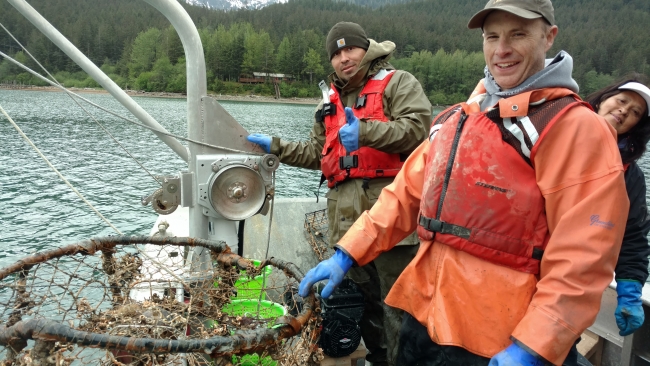In celebration of National Native American Heritage Month, the NOAA Office of Response and Restoration’s Marine Debris Program and Assessment and Restoration Division are highlighting collaboration with native communities, nations, and peoples.
Native communities and their in-depth knowledge of local history and conditions are essential for addressing marine debris in Alaska. A large proportion of Alaska’s coast is remote, so addressing debris can be difficult. Native peoples often have specific knowledge and experience that are important for marine debris efforts in these areas and the NOAA Marine Debris Program (MDP) is proud and grateful to have worked with Alaskan Native organizations on several marine debris projects.
Just recently, the MDP partnered with the Douglas Indian Association to address derelict fishing gear. Through a removal project funded in 2016 and running through January 2018, the Douglas Indian Association is working with local agencies and stakeholders to reduce the loss of commercial species to ghost fishing by detecting, identifying, removing, and disposing of derelict crab pots in Gastineau Channel, outside of Juneau, Alaska. They are also working with these groups to determine applications for the data resulting from these efforts as well as steps forward.
Unfortunately, derelict fishing gear is not the only debris issue in Alaska, as general marine debris routinely accumulates along the coast. To address this issue, several Native organizations and communities have gotten involved. Six communities across the Bering Sea region—St. Paul, St. George, Savoonga, Gambell, Port Heiden, and Nelson Lagoon—are working with the Sitka Sound Science Center to collect, remove, and dispose of shoreline debris through a project funded by the MDP, with support from the Aleutian Pribilof Island Community Development Association and Norton Sound Economic Development Corporation. The project’s cleanup crews come entirely from the local communities, using local expertise on where the greatest accumulations of debris are located, as well as the best techniques to remove the debris, which include methods such as vessel transport and the use of ATVs and other equipment.

Addressing marine debris in the remote areas of Alaska would be impossible without partnerships with native communities. Working together, we move forward to clean our environment for the future.

